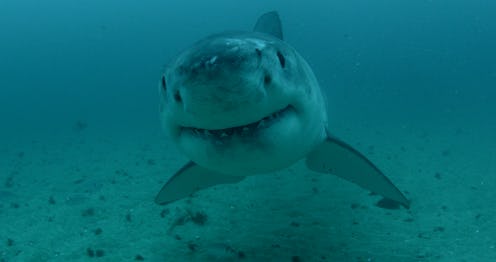Entertainment
This “Monster” Great White Is The Stuff Of Legend — But There May Be More In Its Lair

Cuba's known for many things in pop culture, from Pitbull to cigars, One Day at a Time to Camila Cabello. And now, thanks to Shark Week, "giant shark hangout" can be added to the list. Cuba's Secret Shark Lair airs Monday, July 23, as part of everyone's favorite Discovery Channel summer event. During the program, audiences will learn about a great white called "El Monstruo," or "The Monster," which was found off the coast of Cuba in 1945. You'll watch two teams of researchers try and find both a shark the size of the legendary great white, as well as a hammerhead called "The Queen" — both off the coast of the small, Caribbean nation. So where is Cuba's secret shark lair, and will these brave adventurers find it on Monday night?
According to a 2015 article by the Miami New Times, "El Monstruo" was discovered off the coast of Cojímar, Cuba, in 1945. As legend has it, six fishermen set out to catch whatever was eating their fish. And when they found it, the culprit clocked in at 21-feet and 7,000 pounds. However, according to a video on the Discovery Channel website, the fishermen likely embellished their story. Per a photo analysis that was conducted years later, the monster shark was likely about 16-feet long, its weight impossible to estimate. Nevertheless, a photo taken after El Monstruo's capture shows several people sitting on top of its body, which shows its massive girth.
So where is this secret shark lair? It wouldn't be a mystery if everyone knew where it was, but it may be off the coast of Cojímar, since that's where "El Monstruo" was originally found. The port city is located on the north side of the island, so one team of researchers will be looking there for a great white shark. They'll be setting out into a body of water called, naturally, "El Monstruo's Corridor," per the teaser.
The second group, on the other hand, will stick to the southern shores, looking for a hammerhead called "The Queen." For that reason, the more likely option for the secret shark lair's position is a reef called Jardines de la Reina, or Gardens of the Queen. Per a 2011 episode of 60 Minutes, marine biologists refer to this massive coral reef as an "under-water Eden" because of its secluded location. What's more, Christopher Columbus actually gave the area its name — after the Spanish queen, Isabella I of Castile.
Per the same 60 Minutes episode, Fidel Castro made the Gardens of the Queen a preserved area back in 1996, and the biological life has increased drastically since then. In fact, the fish populations have grown by 30 to 50 percent, according to Fabian Pina, a marine biologist from Cuba. This is vitally important for potential shark sightings, because where there are fish, there will be sharks, as well. As marine biologist David Guggenheim told correspondent Anderson Cooper:
"When we call coral reefs the rainforests of the ocean, we're talking about the diversity of life that lives on these reefs. The relationships among these animals, the fact that the corals create a home for the fish, that they're little fish that feed big fish, that some of these little shrimp walk inside the mouths of the grouper and clean parasites off of the grouper. It's a very complex web of life."
So where is this biological paradise located, exactly? Off the southern coast of Cuba, in a lush archipelago, almost on the exact opposite side of the island as where Cojímar sits. So whatever happens during the course of this Shark Week program, it promises to be exciting. "Diving in parts of Cuba is like taking a step back in time," Dan Whittle of the Environmental Defense Fund told the Miami New Times. "You'll find healthy populations of sharks here that have been decimated elsewhere, like in the U.S."
During Shark Week 2015, a team of researchers tried to find "El Monstruo" in a program called Tiburones: The Sharks of Cuba. However, they came up short. They were, however, able to tag a nine-foot, silky shark, which is no small feat. In fact, it was the first time a shark has been tagged by satellite in Cuba, per the below clip.
Whether these two teams find a mammoth hammerhead or great white or not, fans will doubtless get to see exciting footage of a beautiful, largely untouched ecosystem. And even if neither shark is located in the Gardens of the Queen, who knows what other sea life will be discovered. Whatever the case, this is for certain: If either of these sharks is as big as "El Monstruo," they'd better have a big boat.